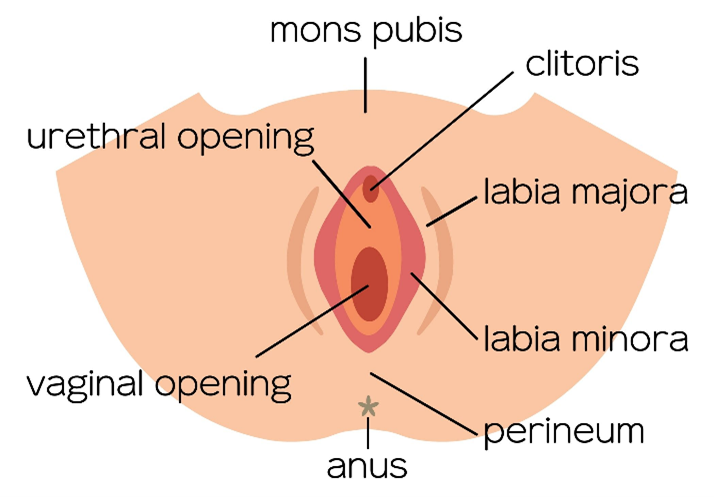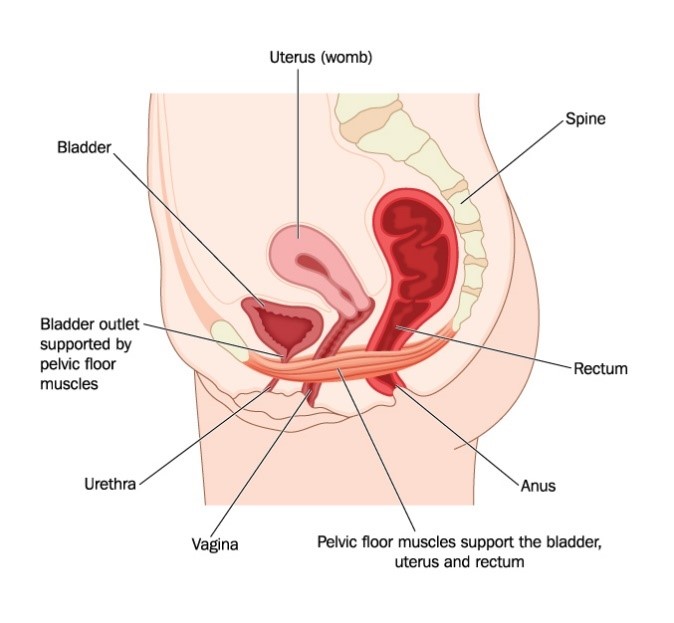MULHA BANDHA
If we are locating Mulha bandha anatomically, then we can begin by taking the awareness to the space between the anal sphincter and the urinary tract, which outwardly is often referred to as the perineum. The perineum is connected to the Pubococcygeus muscle which forms a part of the pelvic diaphragm, or the pelvic floor.
The Pubococcygeus is the primary and central muscle of the Levator ani muscle group, which supports the pelvic floor.
LEVATOR ANI
The Levator ani is a domed shaped sheet of muscle made up of the Pubococcygeus, the Puborectalis and the Illiococcygeus. It roughly spans the space between the sacrum and the coccyx medially, and the pelvic bone laterally. The pelvic floor stabilises the core, supports the pelvic viscera and resists increases in intra-abdominal pressure. The ability to squeeze and relax the Levator Ani aids elimination as well as sexual intercourse.
MULHA BANDHA-PUBOCOCCYGEUS
In the image we can see how the Pubococcygeus (Mulha bandha) crosses in between the anal sphincter and the urinary tract.
I am aware that Mulha bandha is often described as lifting or contracting the anal sphincter, but I would suggest the application of Mulha bandha is a far more subtle action.
The Levator ani muscles do all play a part in elimination, but if we apply more control, we can isolate the anal sphincter and the urinary tract muscles from the Pubococcygeus.

MUDRAS
The anal sphincter muscle contraction is known as Ashwini mudra, and the contraction of the urinary tract is called Vajroli mudra. Both these mudras are linked to Swadhisthana chakra, whereas Mulha bandha is linked to Mulhadhara chakra. From this we can conclude Mulha Bandha is not the contraction of the muscles in front or behind.
SUBTLE EXPERIENCE OF MULHA BANDHA
For me Mulha bandha is the lifting up of the perineum into the space between the Ashwini and Vajroli mudras. Both the anal sphincter and urinary tract muscles will remain completely relaxed. To begin with I would suggest its quite normal to feel the whole of the pelvic floor to engage when looking for Mulha bandha, and with practice the muscles around can stay relaxed.
Having said all this my impression is that Mulha bandha eventually becomes more and more subtle and may be experienced individually.


GRANTHIS
Hatha yoga also prescribes Mulha bandha as a method to work through Brahma Granthi. The Granthis represent blockages in our growth, and there are three.
Brahma granthi resides in the pelvic floor and the pelvic bowl. Vishnu Granthi is in the abdomen and chest area, and Rudra granthi is in the throat and head.
Mulha bandha works in pelvic floor and the pelvic bowl. Uddiyana bandha in the abdomen and chest area and Jalandhara bandha in the throat and head.
PHYSIOLOGY OF MULHA BANDHA
Bandhas are sometimes referred to as locks, and although this may be a way of describing some of them, for me it is a poor description.
The Yoga Kundalini Upanishad calls Mulha Bandha the forcing up of the vital downward current apana vayu.
It states that directing apana vayu upwards, together with igniting internal fire, will make the serpent Kundalini enter its hole, the central energy.

HOW TO PRACRICE MULHA BANDHA
From a kneeling position and as the exhale begins, watch the breath as it descends from the nostrils down through the throat, down through the centre of the chest, down through the abdomen, down through the centre of the pelvis, until it reaches down and hooks into the centre of the pelvic floor.
As the inhale begins, feel the breath ascending back up into the pelvic space with the centre of the pelvic floor (perineum) lifting with it. The inhale continues to rise back up through the abdomen chest and nose.
At the top of the inhale, and as the exhale is about to begin, continue to be aware of a lift in the pelvic floor up into the pelvic space.
Keep repeating the exercise.
When the breath hooks into the pelvic floor and begins to rise, imagine a finger and thumb pinching the very centre of the pelvic floor, so that that the exercise creates the image and feeling of just the centre being drawn up into the pelvic void.
CONTACT MARTIN
- 00447787357306
- 00359876102654
- askyogadharma@protonmail.com


